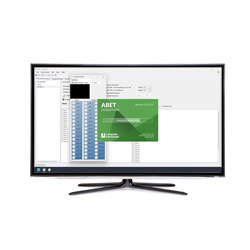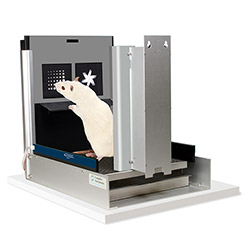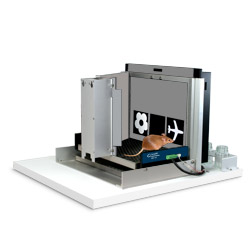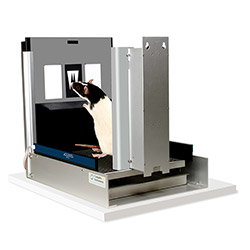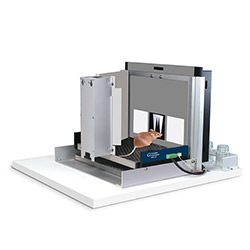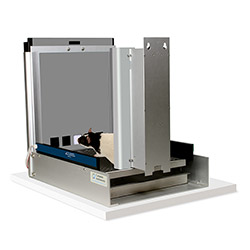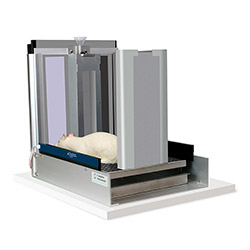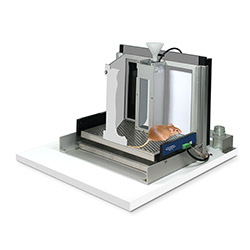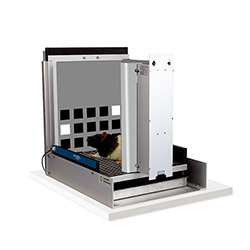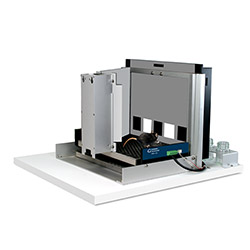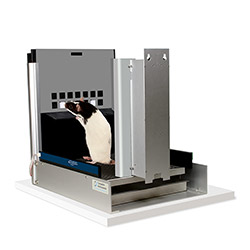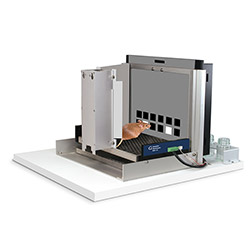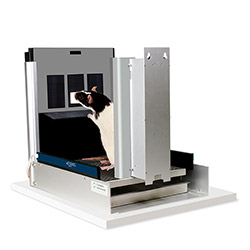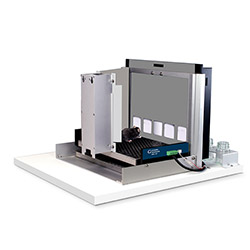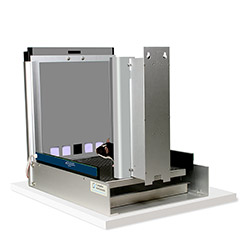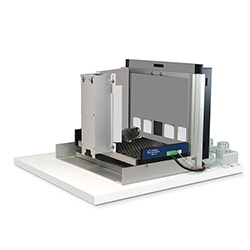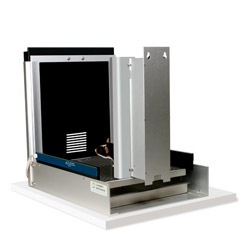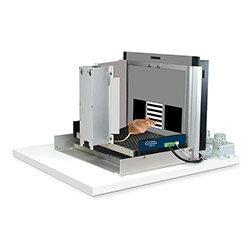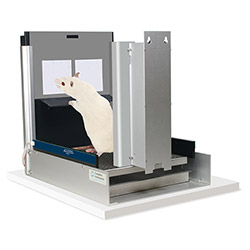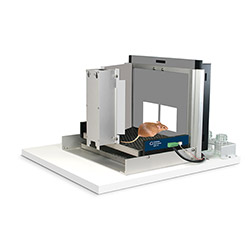Paradigms and Tasks
Our prewritten tasks cover many research areas!
Tasks are ready to run, include all required training paradigms, and can easily be modified as required.
| PD/rev | PAL | VMCL | 5CSRT | Auto | TUNL | LD | Ext | 5CPT | PR/ERC | 4CGT | rCPT | DD | PRL | |
| Huntington's | ||||||||||||||
| Schizophrenia | ||||||||||||||
| Alzheimer's | ||||||||||||||
| Parkinson's | ||||||||||||||
| Depression | ||||||||||||||
| ADHD | ||||||||||||||
| OCD | ||||||||||||||
| Bipolar Disorder | ||||||||||||||
| Motivation | ||||||||||||||
| Impulsivity | ||||||||||||||
| Learning and Memory | ||||||||||||||
| Location Discrimination/Pattern Separation | ||||||||||||||
| Working Memory | ||||||||||||||
| Distraction | ||||||||||||||
| Attention | ||||||||||||||
| Learning | ||||||||||||||
| Decision Making | ||||||||||||||
| Cognitive Flexibility and Response Inhibition | ||||||||||||||
| Emotional Cognition and Responding to Reinforcement | ||||||||||||||
| Executive Function |
ABET Cognition Software
Model 89515
From writing schedules to analyzing data, ABET Cognition gives you the powerful and flexible tools necessary to control a network of touch screen chamber systems.
Two-choice Paired/Visual Discrimination Reversal (PD) for Rats
Model 89540A-R
Adapted for rats, this reversal learning task requires inhibition of prepotent responses and is known to be dependent on the prefrontal cortex.
Two-choice Paired/Visual Discrimination Reversal (PD) for Mice
Model 89540A
Adapted for mice, this reversal learning task requires inhibition of prepotent responses and is known to be dependent on the prefrontal cortex.
Paired-Associate Learning Task (PAL) for Rats
Model 89541A-R
Adapted for rats, this is a hippocampal task. In humans, this task has proved to be highly effective for the early detection of Alzheimer's disease.
Paired-Associate Learning Task (PAL) for Mice
Model 89541A
Adapted for mice, this is a hippocampal task. In humans, this task has proved to be highly effective for the early detection of Alzheimer's disease.
Visuomotor Conditional Learning (VMCL) for Rats
Model 89542A-R
Adapted for rats, this is a habit or stimulus-response task in which the rodent learns a conditional rule.
Visuomotor Conditional Learning (VMCL) for Mice
Model 89542A
Adapted for mice, this is a habit or stimulus-response task in which the rodent learns a conditional rule.
5-choice Serial Reaction Time Task (5CSRT) for Rats
Model 89543A-R
Adapted for rats, this task is sensitive to cortical manipulations, especially those involving prefrontal cortex, and is highly dependent on cholinergic transmission.
5-choice Serial Reaction Time Task (5CSRT) for Mice
Model 89543A
Adapted for mice, this task is sensitive to cortical manipulations, especially those involving prefrontal cortex, and is highly dependent on cholinergic transmission.
Autoshaping (Auto) for Rats
Model 89544A-R
Adapted for rats, this task measures a Pavlovian response to the screen. This is a very rapidly administered test of simple classical conditioning that is dependent on a reward system centered on the ventral striatum.
Autoshaping (Auto) for Mice
Model 89544A
Adapted for mice, this task measures a Pavlovian response to the screen. This is a very rapidly administered test of simple classical conditioning that is dependent on a reward system centered on the ventral striatum.
Trial-unique Nonmatching-to-Location Task (TUNL) for Rats
Model 89545A-R
Adapted for rats, this is a working memory task. TUNL is a delayed nonmatching-to-place task that prevents the mediating strategies associated with the equivalent lever task.
Trial-unique Nonmatching-to-Location Task (TUNL) for Mice
Model 89545A
Adapted for mice, this is a working memory task. TUNL is a delayed nonmatching-to-place task that prevents the mediating strategies associated with the equivalent lever task.
Location Discrimination (LD) for Rats
Model 89546A-R
Adapted for rats, this is a spatial memory task with a reversal learning component. It is sensitive to hippocampal lesions and associated with glutamate receptor regulation and signaling.
Location Discrimination (LD) for Mice
Model 89546A
Adapted for mice, this is a spatial memory task with a reversal learning component. It is sensitive to hippocampal lesions and associated with glutamate receptor regulation and signaling.
Extinction (EXT) for Rats
Model 89547A-R
Adapted for rats, this is a simple, but powerful, test of behavioral inhibition.
Extinction (EXT) for Mice
Model 89547A
Adapted for mice, this is a simple, but powerful, test of behavioral inhibition.
5-Choice Continuous Performance Test (5C-CPT) for Rats
Model 89548A-R
Adapted for rats, this go/no-go task measures both attentional and inhibitory systems within a single task paradigm, enabling the assessment of vigilance.
5-Choice Continuous Performance Test (5C-CPT) for Mice
Model 89548A
Adapted for mice, this go/no-go task measures both attentional and inhibitory systems within a single task paradigm, enabling the assessment of vigilance.
Progressive Ratio and Effort Related Choice Task (PR/ERC) for Rats
Model 89549A-R
Adapted for rats, this touch screen task has been shown equivalent to those performed with levers or nose-poke holes in measuring motivation and reward-related decision making.
Progressive Ratio and Effort Related Choice Task (PR/ERC) for Mice
Model 89549A
Adapted for mice, this touch screen task has been shown equivalent to those performed with levers or nose-poke holes in measuring motivation and reward-related decision making.
4-Choice Gambling Task (4C-GT) for Rats
Model 89550A-R
Adapted for rats, this test is based on the Iowa Gambling Task, sensitive to serotonergic and dopaminergic agents.
4-Choice Gambling Task (4C-GT) for Mice
Model 89550A
Adapted for mice, this test is based on the Iowa Gambling Task, sensitive to serotonergic and dopaminergic agents.
Rodent Continuous Performance Task: Image (rCPT) for Rats
Model 89551A-R
Adapted for rats. In this Rodent CPT (Image) task, 5 different images are shown briefly, one at a time and in a random order. One of the images is designated the target stimulus. In order to obtain reward, the subject must touch the target stimulus and withhold from touching the non-target stimuli.
Rodent Continuous Performance Task: Image (rCPT) for Mice
Model 89551A
Adapted for mice. In this Rodent CPT (Image) task, 5 different images are shown briefly, one at a time and in a random order. One of the images is designated the target stimulus. In order to obtain reward, the subject must touch the target stimulus and withhold from touching the non-target stimuli.
Delay Discounting Task (DD) for Rats
Model 89552A-R
Adapted for rats. As a measure of impulsivity, the Delay Discounting Task (DD) measures how long the rodent is prepared to wait for a larger reward.
Delay Discounting Task (DD) for Mice
Model 89552A
Adapted for mice. As a measure of impulsivity, the Delay Discounting Task (DD) measures how long the rodent is prepared to wait for a larger reward.
Probabilistic Reversal Learning (PRL) for Rats
Model 89553A-R
Adapted for rats. Designed to measure sensitivity to valence feedback information, PRL is sensitive to serotonergic manipulations, suggesting this test may be used to study depression-relevant behavior.
Probabilistic Reversal Learning (PRL) for Mice
Model 89553A
Adapted for mice. Designed to measure sensitivity to valence feedback information, PRL is sensitive to serotonergic manipulations, suggesting this test may be used to study depression-relevant behavior.
